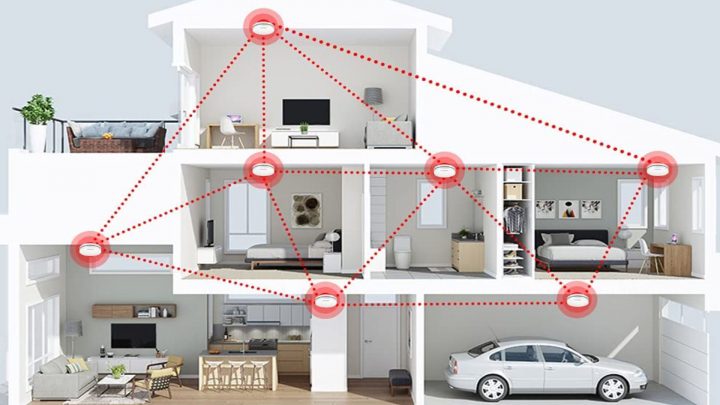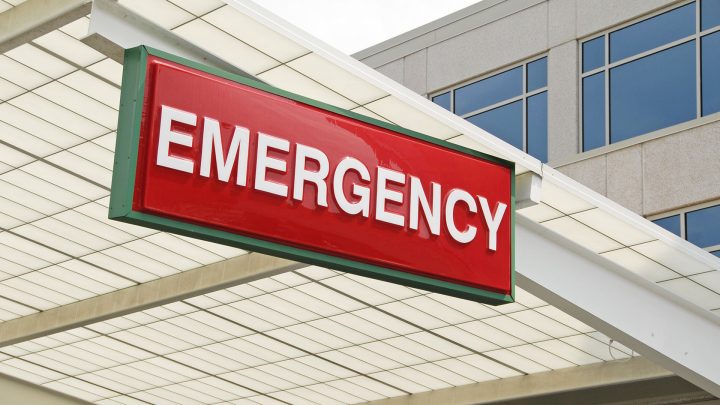Carbon monoxide can invade our home and kill, and you'll never see it. It's especially deadly at night when you're asleep and you won't realize you're getting sick. People with greater oxygen needs like pregnant women, babies, children, senior citizens and those with coronary/respiratory problems are more vulnerable to carbon monoxide poisoning.

You can't see carbon monoxide because it's a gas dispersed in the air, and it's odorless and tasteless. This makes it difficult to detect carbon monoxide in your home unless you install a carbon monoxide detector.

Why Should You Worry About Carbon Monoxide
Carbon monoxide is dangerous because it accumulates in the blood and replaces the oxygen your cells need to function. When carbon monoxide (CO) is in the air, it builds up in the blood and causes symptoms similar to the flu like headaches, fatigue, nausea, confusion and irritability. As the level of carbon monoxide increases, there is vomiting, lost of consciousness an eventually brain damage or death can occur.

Where Does Carbon Monoxide Come From?
Carbon monoxide is created whenever fuel is burned. The amount of CO produced during normal operation is usually not harmful. This gas becomes harmful when appliances are used improperly or are not functioning adequately, so let's look at the various items in your home that burn fuel.
- Gas or oil furnaces.
- Gas hot water heaters.
- Gas clothes dryers.
- Gas stoves (why I'm writing this article).
- Space heaters that burn any type of fuel, not just gas.
- Fireplaces and wood/pellet burning stoves.
- Gas powered outdoor equipment like lawn mowers and pressure washers, when emissions from the engine are held indoors.
- Cars with an engine running in the garage and fumes can enter the home through walls/doorway.
All of these appliances and home systems burn fuel (oil, natural gas, propane gas, wood or charcoal) and produce small amounts of carbon monoxide. They all contribute to a CO problem in a house when it is not vented properly. When you make your home more airtight for energy efficiency, make sure you maintain adequate ventilation to prevent a CO problem.

Preventing Carbon Monoxide Poisoning
When a home is properly vented and all the appliances and home systems are working correctly, the low levels of carbon monoxide will be safely vented to the outside. Home ventilation isn't well understood by homeowners and each time you add/change an appliance or adjust air flow, there is the possibility you're trapping CO in your home.
You aren't likely to recognize a CO problem right away. You might have a slow gas leak in your stove or fireplace, or maybe the furnace heat exchanger cracks. It might take several weeks/months for you to discover the problem. Any of these problems can allow the buildup of carbon monoxide contaminated air to remain in your home. In fact, some exhaust fans (range hood, clothes dryer or bathroom fan) might pull carbon monoxide back into your house.
The Consumer Product Safety Commission recommends carbon monoxide detector(s) in your home to alert you to problems quickly. The first CO detector should be installed near the bedrooms with additional detectors on every level of your home for extra protection. Choose a detector approved by Underwriters Laboratories (UL) that has an alarm that can wake you up when sleeping. There are different types of detectors, similar to smoke detector products.

- Battery powered detectors continue working when there is a power outage.
- Carbon monoxide detectors can be wired to your home's electrical system by plugging into a standard electrical outlet, or hardwired AC models.
- Get double protection with hardwired AC models with battery back-up.
- Connected CO and/or smoke detectors mean that all alarms will sound when just one identifies a problem … an extra safety measure for deep sleepers.
Now that you've got a carbon monoxide detector to alert you to a problem, let's look at what you should be doing to prevent as many problems as you can. Your electric powered appliances don't produce carbon monoxide but any appliances or home systems you have that burn fossil fuels will give off carbon monoxide and you want to minimize the amount.
- Have all fuel burning appliances installed by a qualified home professional.
- Follow a regular schedule for getting all fuel burning appliances inspected … not just your home heating system, but a gas powered hot water heater, stove, etc.
- When buying a new appliance or heating system, look for ones that reduce the risk of carbon monoxide poisoning, like like direct vent gas fireplaces.
- Inspect fireplaces, wood stoves and chimneys to insure they are venting properly. You also need to have your chimney cleaned professionally to prevent build-up which will reduce ventilation.
- NEVER use a gas or charcoal barbeque indoors, no matter how nasty the weather is outside.
- Never start/run your car or gas powered equipment, i.e. lawnmower, snow blower, etc … in a closed garage.

When Your CO Detector Sounds Off
First make sure it's your CO detector and not your smoke detector. Newer carbon monoxide detectors have “carbon monoxide detector” written in a different color on the cover. Some detectors have a warning alarm to let you know carbon monoxide is starting to accumulate. That's when you want a trained HVAC contractor to inspect your home to determine what is causing the problem.
When your CO alarm goes off, follow these steps:
- Get everyone, including pets, outdoors to an area with clean air … immediately. Check babies and children once outside, as they are affected more quickly.
- Call 911 (or the fire department) to report the problem. It is not safe for you to re-enter the house to find the source of the problem.
- Do not drive a motor vehicle.
- Stay far enough away to remain safe until you're told it's safe to return. If you don't remain nearby, leave the front door unlocked. You don't want firefighters using a ladder to find an open window like happened when a neighbor locked the door as she left the house.
Visit the National Fire Protection Association's website for more information about carbon monoxide alarms, including educational materials for parents and teachers.
More Resources for a Healthy Home
We're spending more time at home so insuring the health of your family is even more important. Here are some of our most popular articles on creating a healthy home:
- Smoke Detectors: From Ordinary to Connected
- Breathe Healthy INSIDE Your Home
- Tips for Maintaining a Healthy Home
- Natural Light Keeps You Healthy
- A Home Safety Checklist to keep you, your family and home healthy and safe!




Leave a Reply